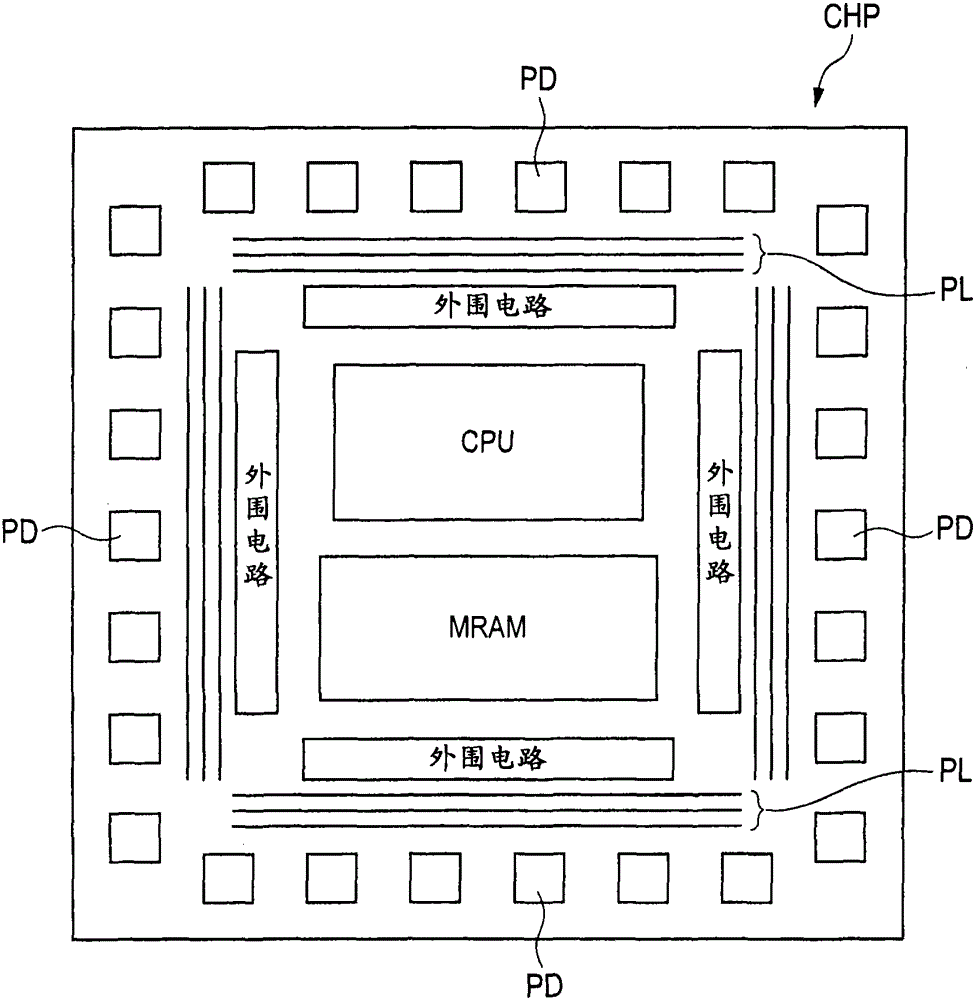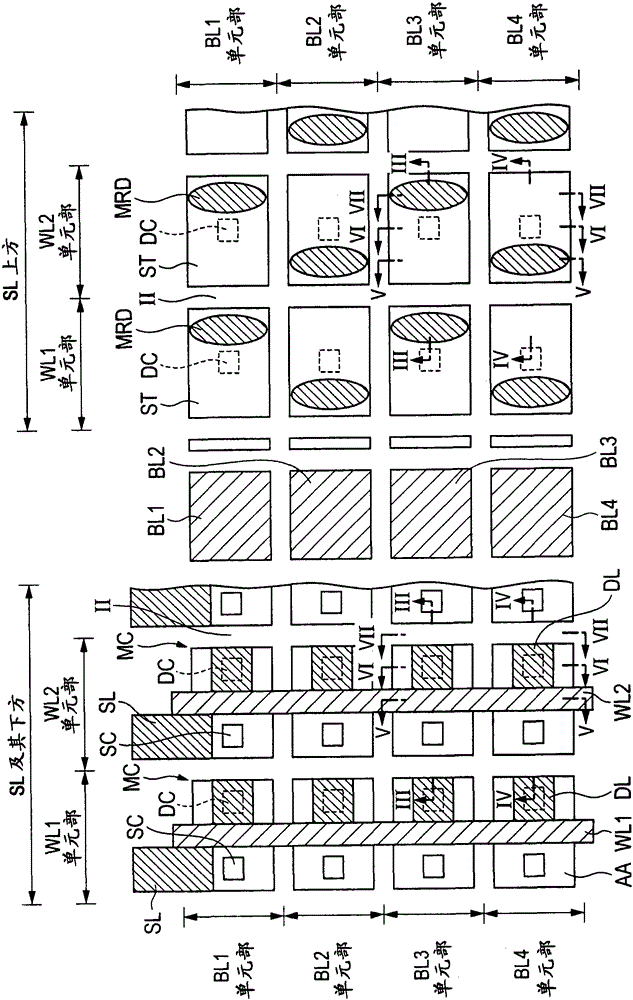Semiconductor device
A semiconductor and device technology, applied in the field of semiconductor devices, can solve problems such as error rewriting
- Summary
- Abstract
- Description
- Claims
- Application Information
AI Technical Summary
Problems solved by technology
Method used
Image
Examples
no. 1 example
[0145] First, refer to figure 1 A description is given of the semiconductor device in the form of a chip in this embodiment.
[0146] Such as figure 1 As shown, the semiconductor chip CHP in this embodiment includes a CPU (Central Processing Unit), an MRAM, peripheral circuits, and a power supply line PL. Pads PD are placed in the peripheral region of the semiconductor chip CHP.
[0147] The CPU is a circuit also called a central processing unit, and it reads instructions from a storage device, interprets the instructions, and performs various calculations and controls based on the instructions. For this reason, high-speed processing of the CPU is required.
[0148] An MRAM is an element from which memory information can be read and written in a random fashion using magnetism. The MRAM has not only a function as a nonvolatile memory in which memory information is retained even after power is turned off, but also a high-speed random access function. The MRAM includes: a ...
no. 2 example
[0206] The second embodiment of the present invention differs from the first embodiment in the arrangement of the magnetoresistive element MRD and the configuration of the bit line BL. In the following, reference will be made to Figure 27 to Figure 47 A description is given of the configuration of this embodiment.
[0207] Such as Figure 27 As shown in , the memory cell region in the first example of this embodiment also has the same Figure 2 to Figure 7 The memory cell regions shown in the first embodiment are basically the same configuration. However, in Figure 27 In the example in , the magnetoresistive element MRD and the drain contact DC are arranged such that they overlap each other as seen in the plane.
[0208] A more specific description will be given. Among the magnetoresistive elements MRD arranged in a staggered configuration, the magnetoresistive elements MRD of the BL1 unit portion and the BL3 unit portion are placed on the right side of each strap wirin...
no. 3 example
[0236] The third embodiment of the present invention differs from the first embodiment in the arrangement of the source and drain contacts and the configuration of the source line SL. In the following, reference will be made to Figure 48 to Figure 77 A description is given of the configuration of this embodiment.
[0237] In the first example of this embodiment, as Figure 48 As shown in , the magnetoresistive elements MRD are arranged such that they are as in relation to the first embodiment figure 2 Arranged in a staggered configuration with respect to each strap wiring ST as in. In this embodiment, in addition to the above features, the source contacts SC and drain contacts DC are also arranged in a staggered configuration similarly to the magnetoresistive elements MRD.
[0238] A more specific description will be given. For example, in Figure 48The source contacts SC and drain contacts DC of two memory cells MC adjacent to each other in the vertical direction are a...
PUM
 Login to View More
Login to View More Abstract
Description
Claims
Application Information
 Login to View More
Login to View More - R&D
- Intellectual Property
- Life Sciences
- Materials
- Tech Scout
- Unparalleled Data Quality
- Higher Quality Content
- 60% Fewer Hallucinations
Browse by: Latest US Patents, China's latest patents, Technical Efficacy Thesaurus, Application Domain, Technology Topic, Popular Technical Reports.
© 2025 PatSnap. All rights reserved.Legal|Privacy policy|Modern Slavery Act Transparency Statement|Sitemap|About US| Contact US: help@patsnap.com



